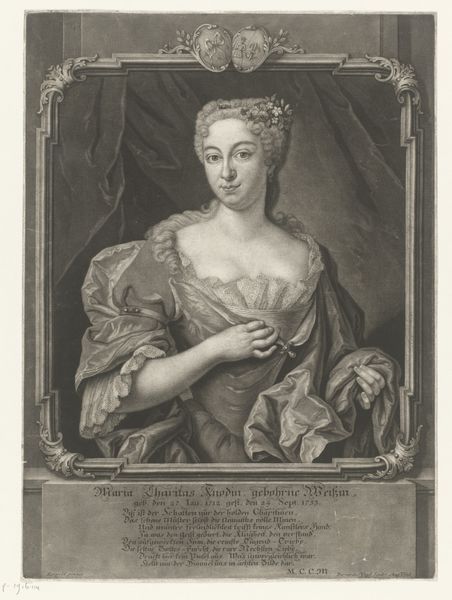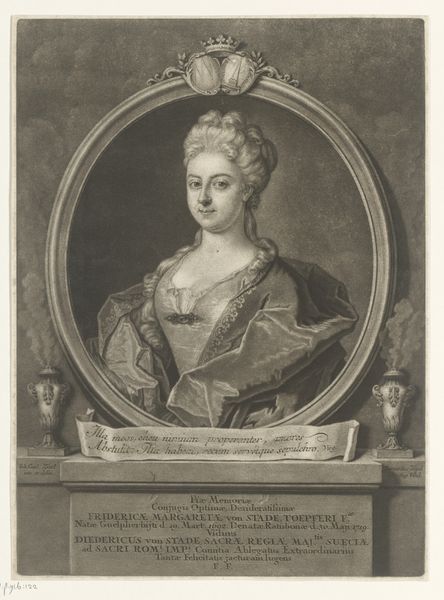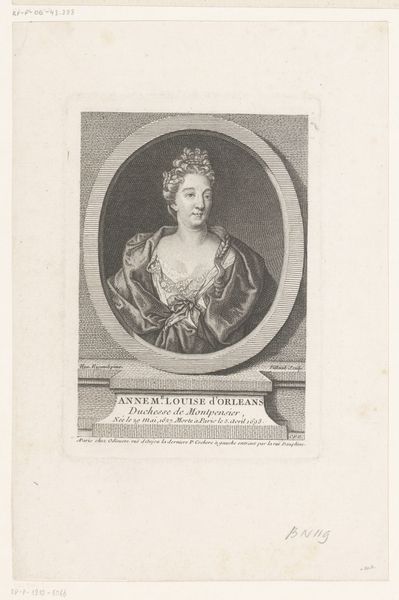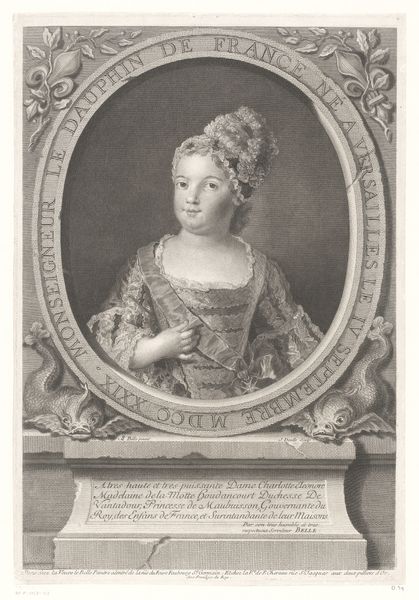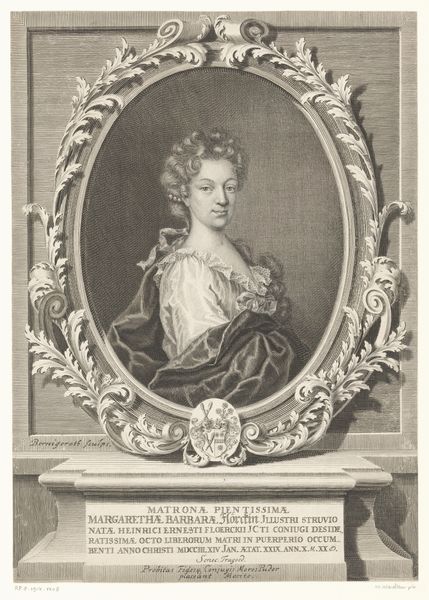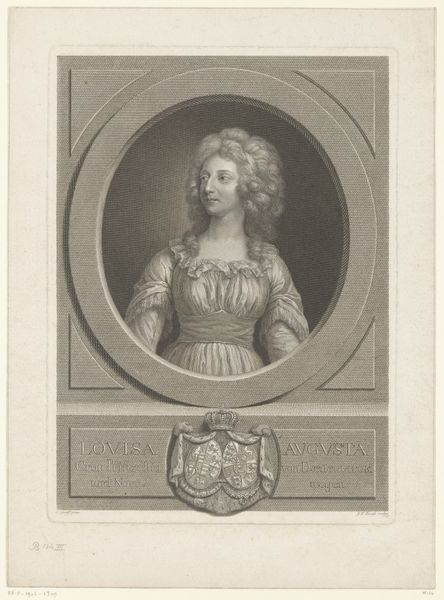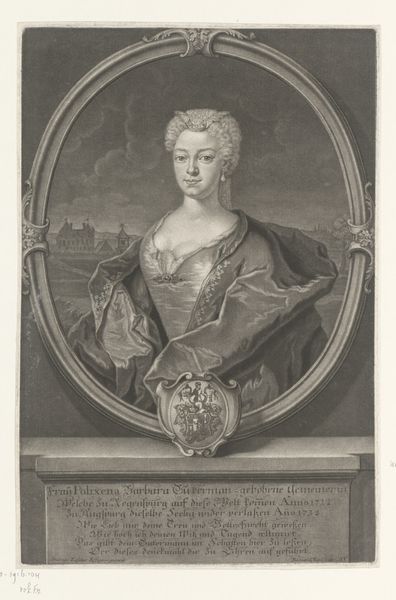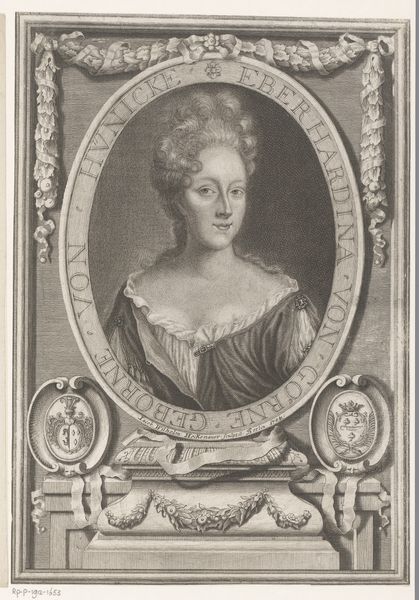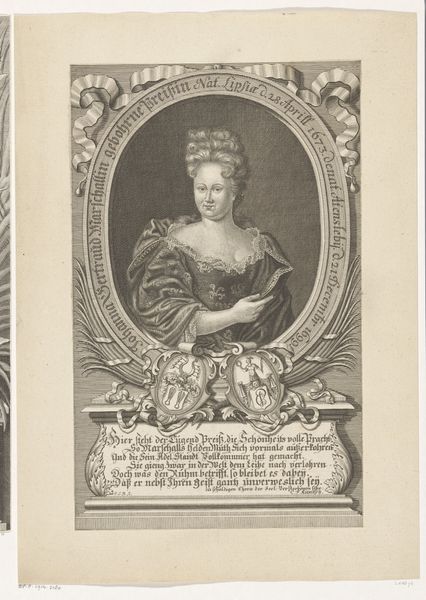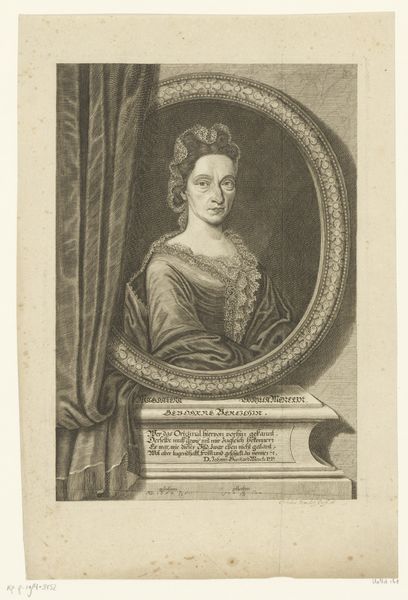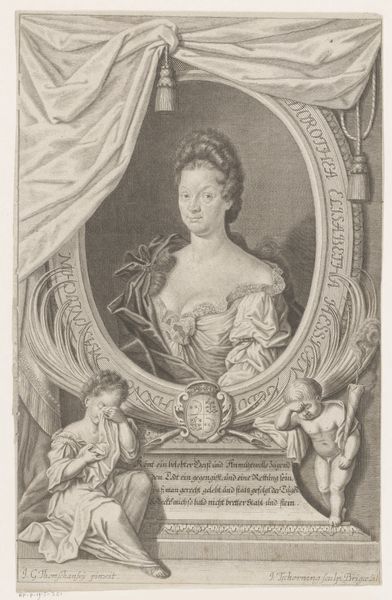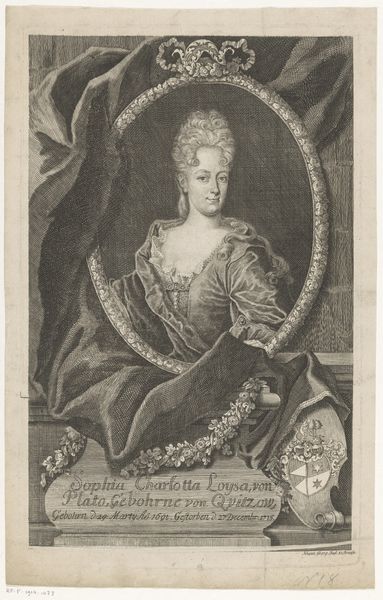
Portret van Antoinette Du Ligier de la Garde Deshoulières c. 1675 - 1700
0:00
0:00
engraving
#
portrait
#
baroque
#
northern-renaissance
#
engraving
Dimensions: height 148 mm, width 94 mm
Copyright: Rijks Museum: Open Domain
Curator: Looking at this image, I immediately sense an aura of self-possession and perhaps a hint of melancholy in the sitter’s gaze. It feels rather intimate, despite the formal presentation. Editor: Here we have an engraving from about 1675 to 1700, created by Lamberecht Causé. It's entitled "Portret van Antoinette Du Ligier de la Garde Deshoulières," housed right here at the Rijksmuseum. What initially grabs you about this piece beyond the affect in the portrait itself? Curator: The oval frame certainly dictates our gaze. We see this refined woman set within, her name inscribed like a kind of personal history circling her head. Even without knowing who she is, that contextualises a particular kind of symbolism for her status. I'm particularly drawn to the crest below too. Editor: As it happens, Antoinette Deshoulières was a celebrated French poet and philosopher, enjoying considerable fame during her lifetime. The imagery is all incredibly deliberate. Notice the laurel crown—the symbol of poetic achievement. Curator: Ah, so this is an assertion of her intellectual status, subtly coded. The pose seems less accidental now. Editor: Precisely. This isn't simply a portrait but a statement about her position in intellectual circles. The Northern Renaissance elements within the Baroque are definitely visible, in this careful balancing act. Curator: And to see her represented through this specific medium... the print, rather than a grand oil painting. It points to wider circulation of her image and ideas, her presence among a certain educated readership. A political claim. Editor: It feels, yes, a little bit radical when you consider how constricted women’s expression was back then. The image becomes a vessel, carrying these charged ideas of female intellectual agency, across borders, across time... Curator: Exactly. I look at it now and see the quiet defiance in her eyes. Editor: It gives me a renewed appreciation for these glimpses into the past – to consider how powerfully symbolism could operate as both aspiration, and protest.
Comments
No comments
Be the first to comment and join the conversation on the ultimate creative platform.
